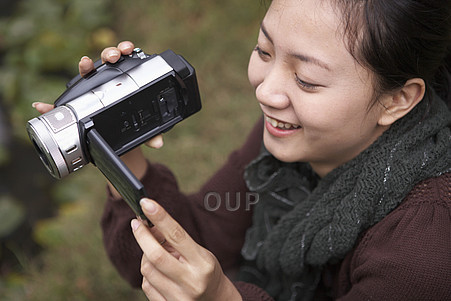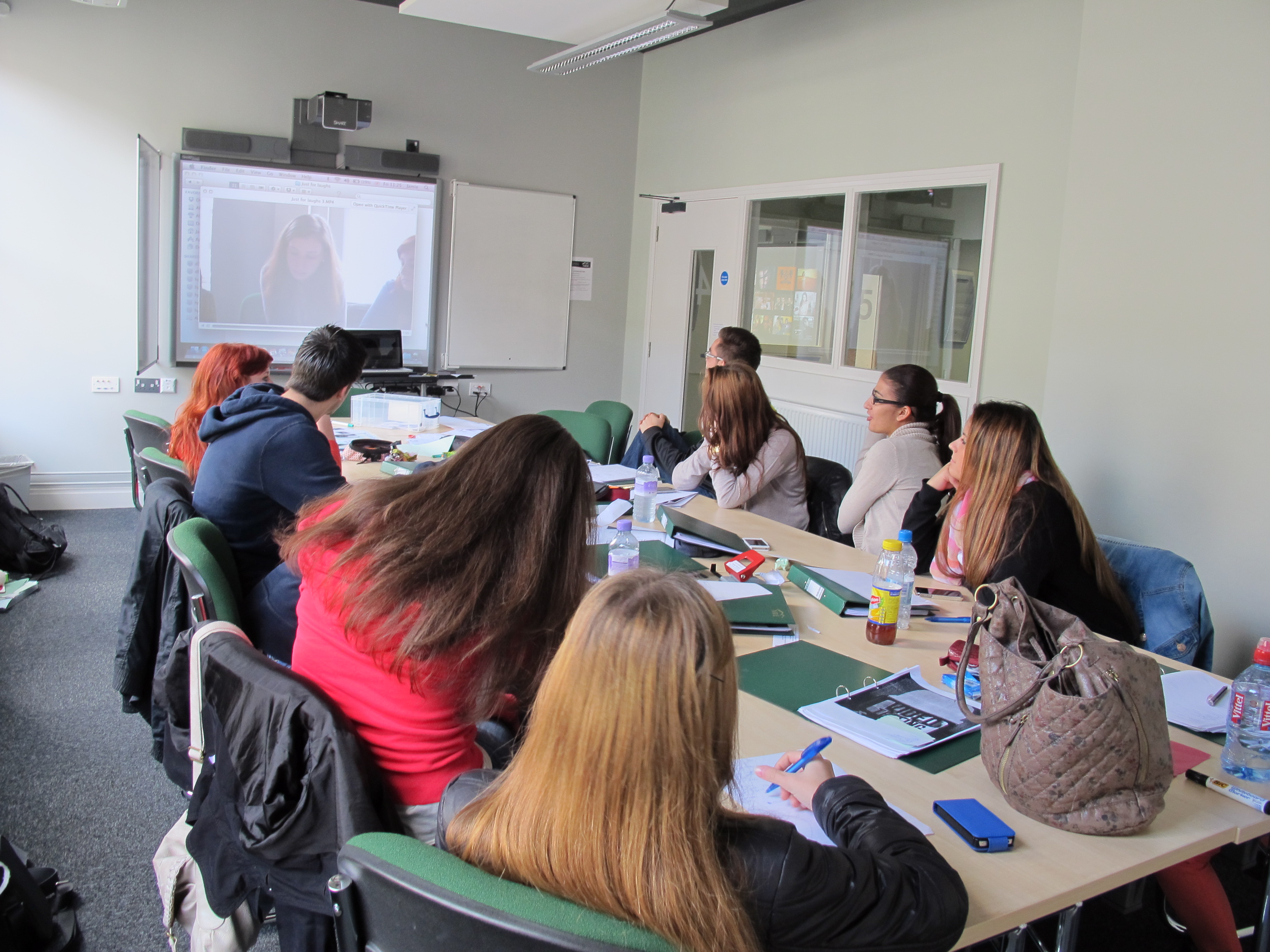 Jamie Keddie, author of Bringing Online Video into the Classroom, looks at the benefits of handing over control of the video camera to students. Jamie will be hosting a webinar on this topic on 15th and 16 April.
Jamie Keddie, author of Bringing Online Video into the Classroom, looks at the benefits of handing over control of the video camera to students. Jamie will be hosting a webinar on this topic on 15th and 16 April.
Filmed presentations
Anyone who is involved in rail transport will know that stopping trains at stations wastes time, energy and money. Unfortunately, it is also necessary to let passengers on and off! Today, your students are highly-creative problem solvers. Their task is to work in small groups to design a high-speed train which doesn’t have to stop at stations, but which still allows passengers to alight and disembark.
After sharing ideas and reaching a consensus, each group prepares to present their solution to the rest of the class. This involves creating diagrams to reinforce ideas. When they give their presentations, you sit at the back of the classroom and film their performances.
Later, you show students the following video which illustrates an idea for a train which doesn’t have to stop at stations:
From teacher’s to students’ hands
Filming presentations and other performances can be a great way to motivate students and document their work. However, in the activity described above, the technology stayed firmly in the teacher’s hands. The result of this could be missed opportunities for student creativity, interaction, and learning.
By giving control of the video cameras to students, the activity could have been completely different. Rather than the traditional speaking-at-the-front-of-the-class format, groups of students could find their own quiet corners (either in or out of the classroom) and work together to create a video in which individuals communicate their group’s idea to the camera. The resulting videos can then be delivered to the teacher and later played on the classroom projector for everyone to see and comment on.

Here are some thoughts about why this second option may be favourable:
1. Students’ own devices
In many situations, students will come to class with video cameras already in their hands! Smartphones and tablet computers both have video-recording functions which are perfectly adequate for the classroom.
2. An open learning space
If students make use of their own video devices, the filming process can extend to outside the classroom. Assignments in which students create videos for homework become possible.
3. Less stress for students
Speaking English in class can be stressful enough for many students. When the teacher points a video camera at such learners, the experience can be even more intimidating. The camera may be less daunting in the hands of a classmate.
4. Technological control means creative control
If students control the technology, they can get creative. For example, they may want to think carefully about the filming location or props to include in the frame. They may also want to edit their work, include close-ups of visuals, decide what to leave in, decide what to take out, add credits, etc. In addition, with control of the technology, students can go at their own pace. They can film as and when they are ready. They can also do more than one ‘take’ in order to get the result that they are looking for.
5. Content ownership
Digital content is notoriously ‘slippery’. It does not deteriorate with time and can easily fall into unintended hands. Understandably, students may be concerned about what happens to videos that you create in the classroom. When students make use of their own video devices, they automatically become owners of the content. This can make the process less intimidating. In addition, if you would like students to share their videos online, they can choose to do so on their preferred video-sharing site.
6. Parental permission
Permission to film younger learners and teens can be easier to obtain if we can demonstrate to parents that we want them to make use of their own video-recording devices in and out of the classroom. As well as the ownership issue mentioned above, we can ask parents to take an active role in the video production process. For example, if we want students to upload their work, parents could monitor video content first before giving the go-ahead.
7. Reduced workload for the teacher
Perhaps the most important point to make! Tablets and smartphones can be regarded as all-in-one devices. Students can use them to create, edit and share video. There is no need to transfer video files from one machine to another (camera to computer, for example), a potentially time-consuming step that many teachers will be familiar with.
8. Engaged viewing
For some inexplicable reason, most teenagers that I have worked with engage better with video presentations than with live classroom presentations (see image above). With students’ attention, we can make use of the pause and rewind buttons for language feedback. This can include drawing attention to good language and communication, and error correction.
To find out more about using video in the classroom, register for Jamie’s webinar on 15th and 16th April.


[…] Jamie Keddie, author of Bringing Online Video into the Classroom, looks at the benefits of handing over control of the video camera to students. Jamie will be hosting a webinar on this topic on 15th and 16 April. […]
Sppot on with this write-up, I absolutely think this
site needs much more attention. I’ll probably be back again to see more, thanks for the advice!